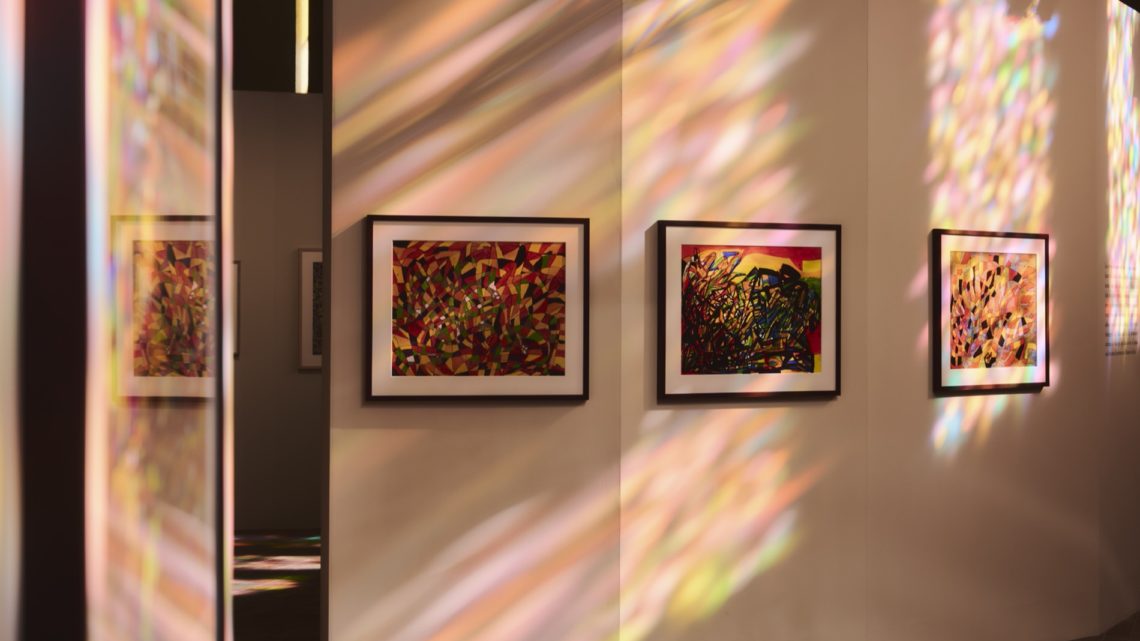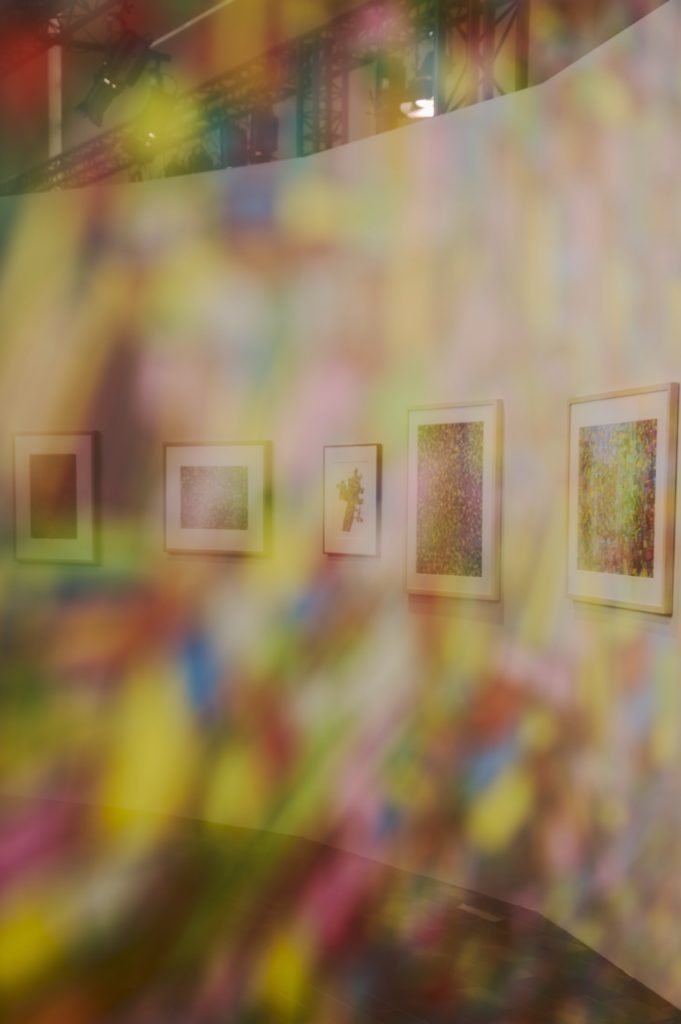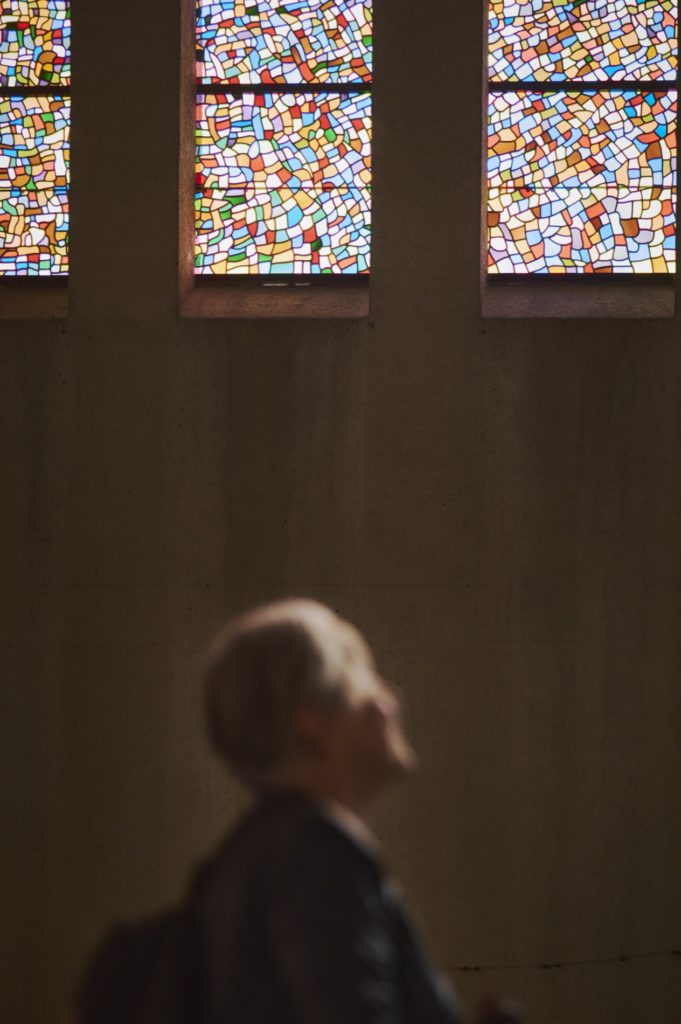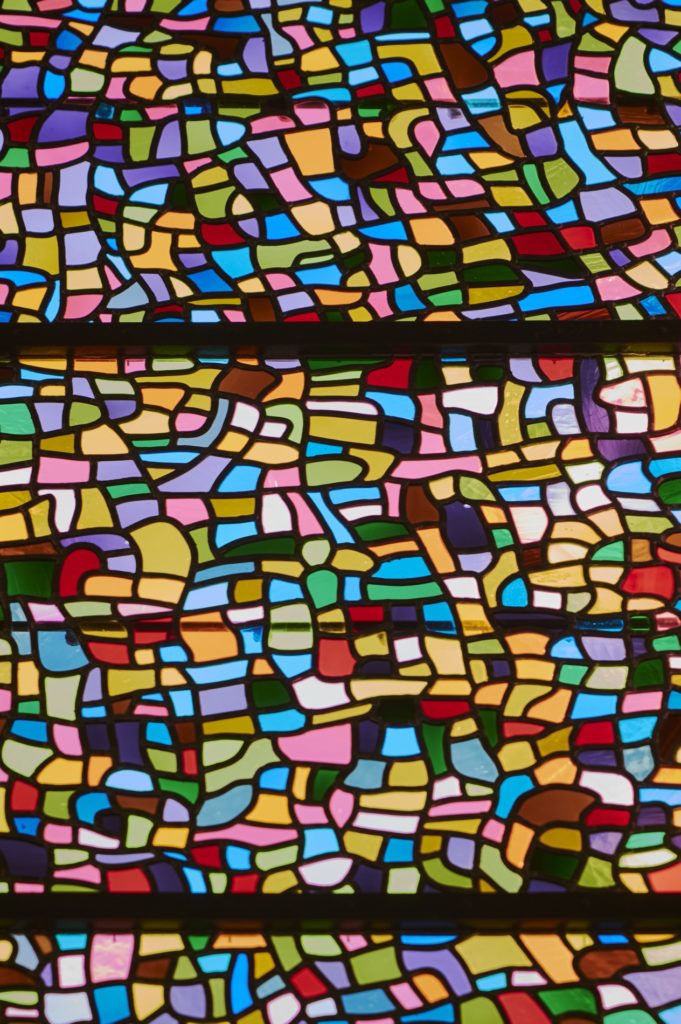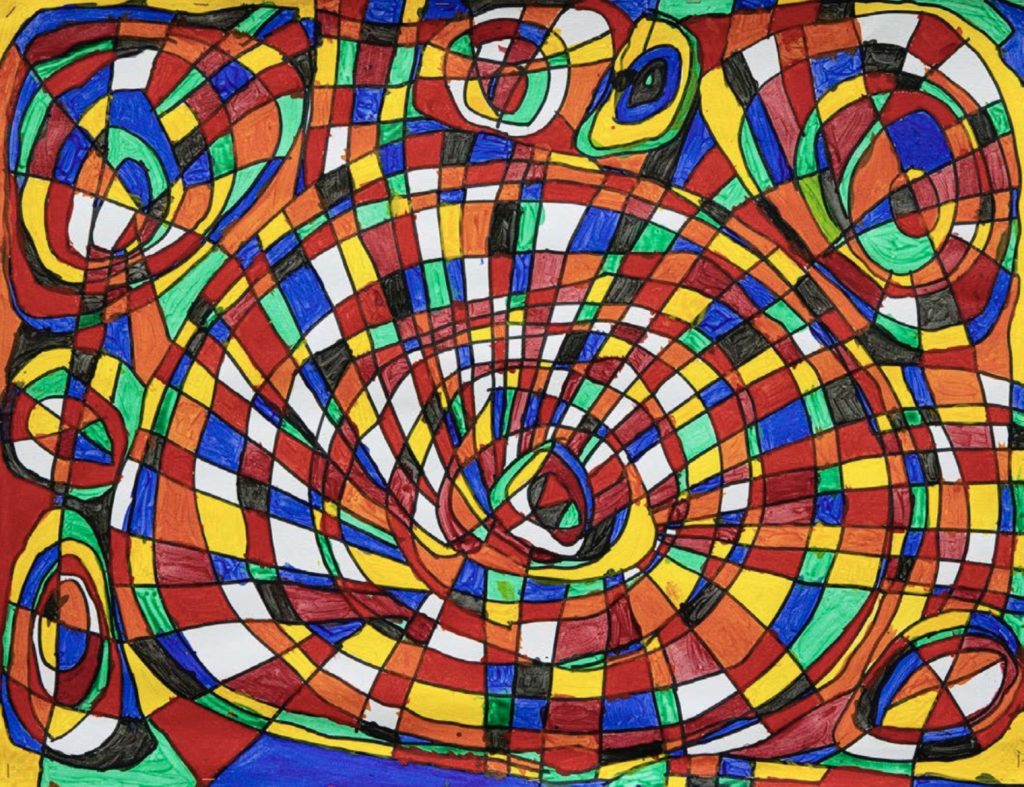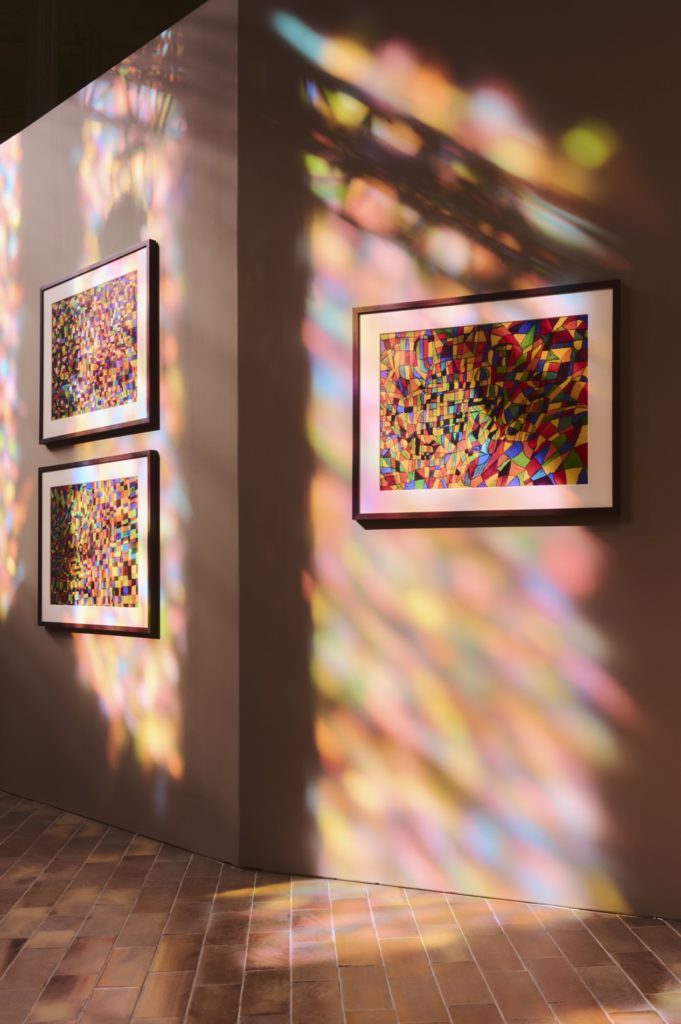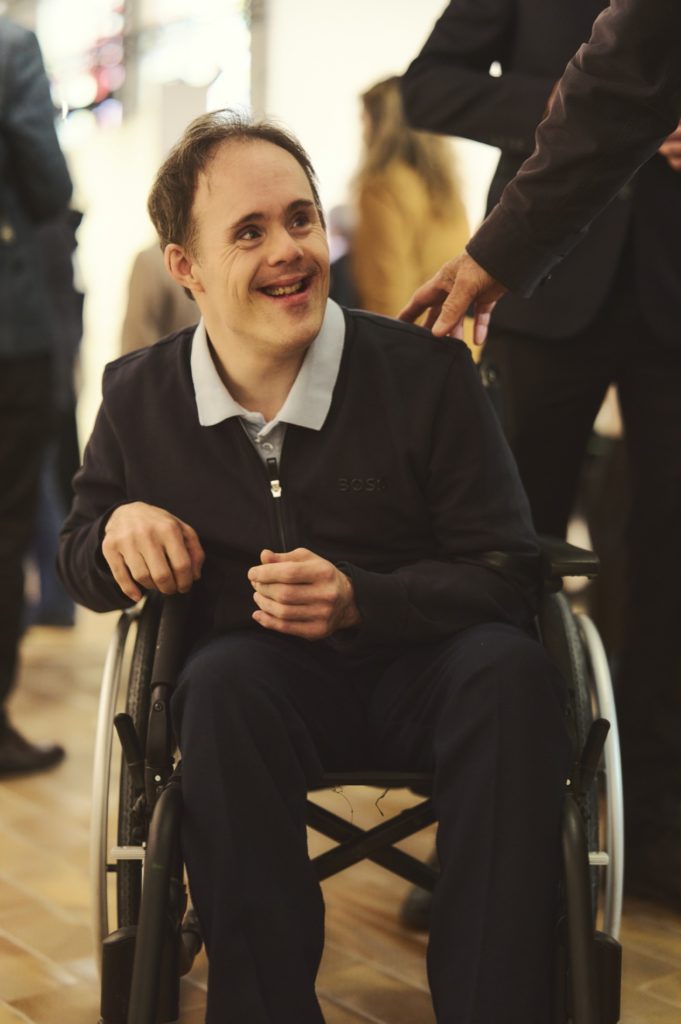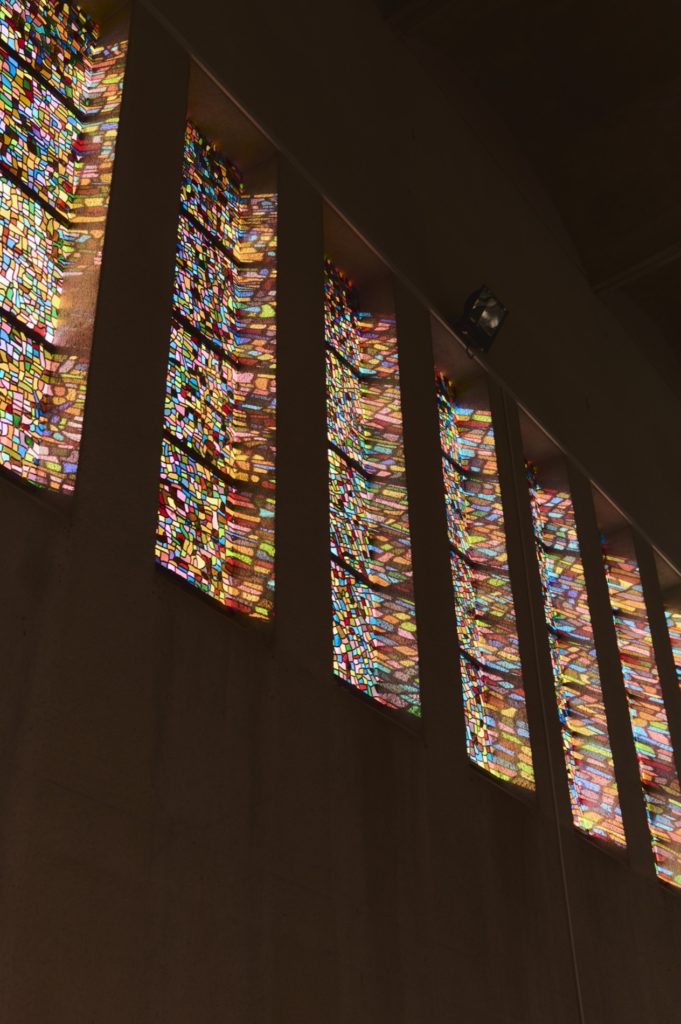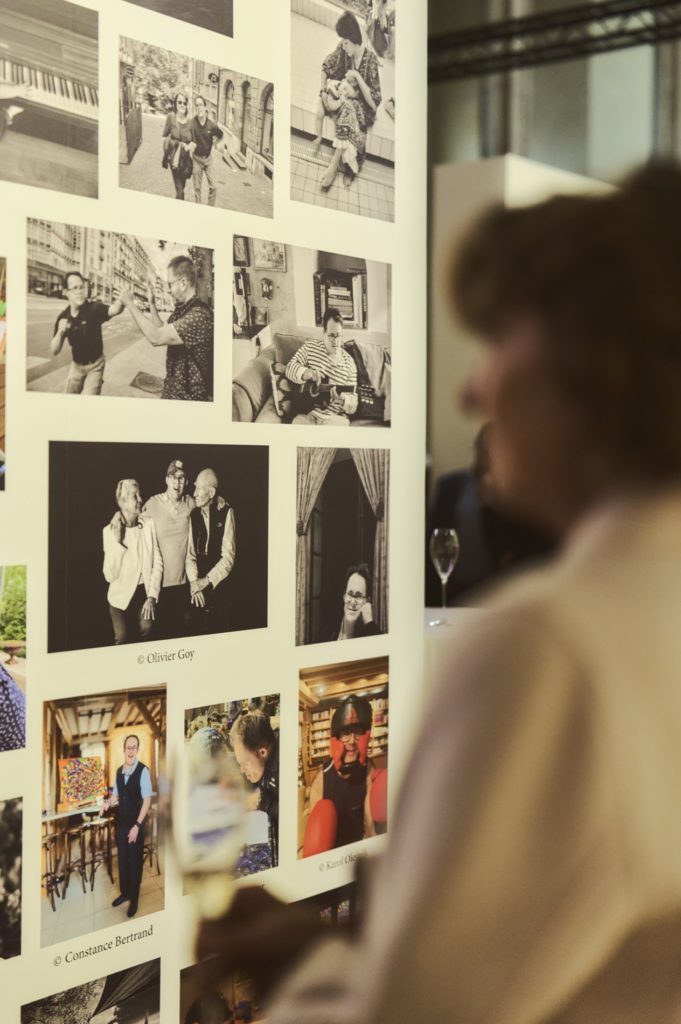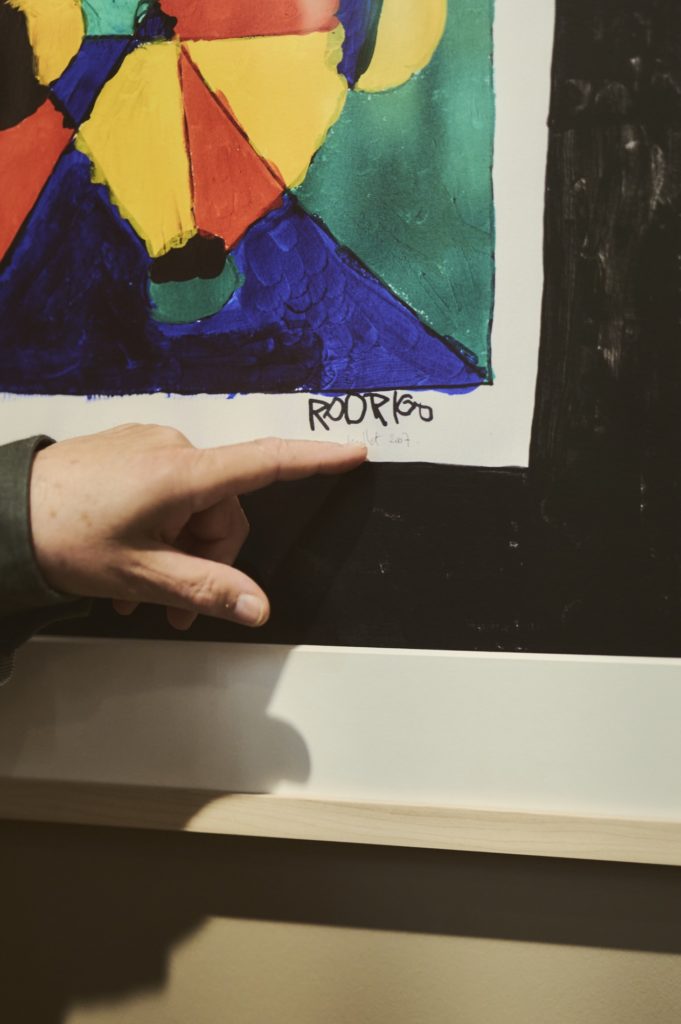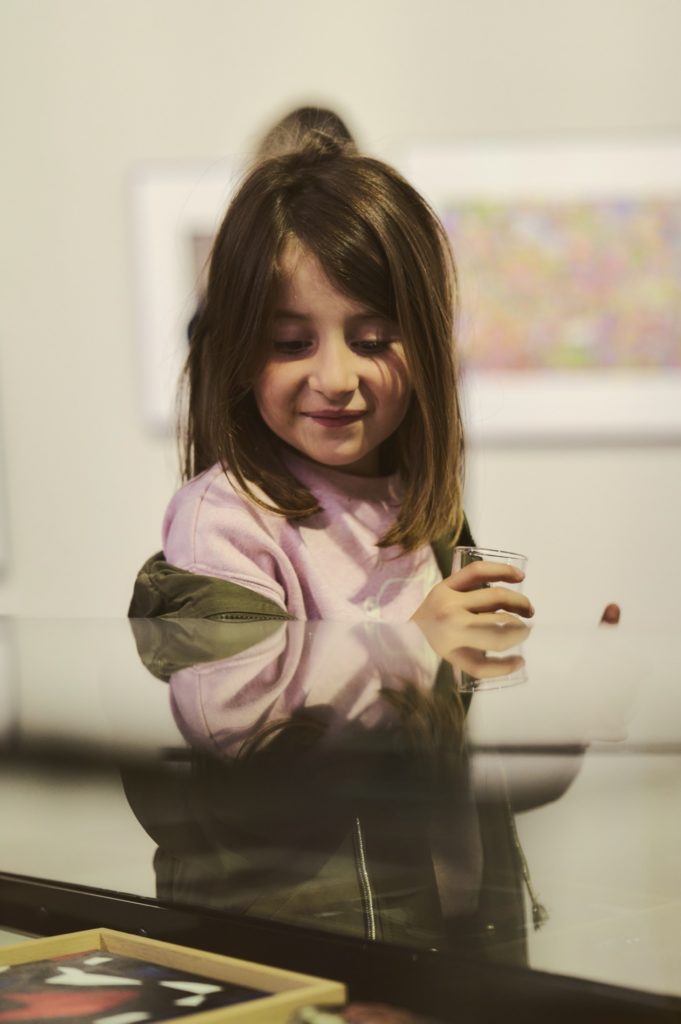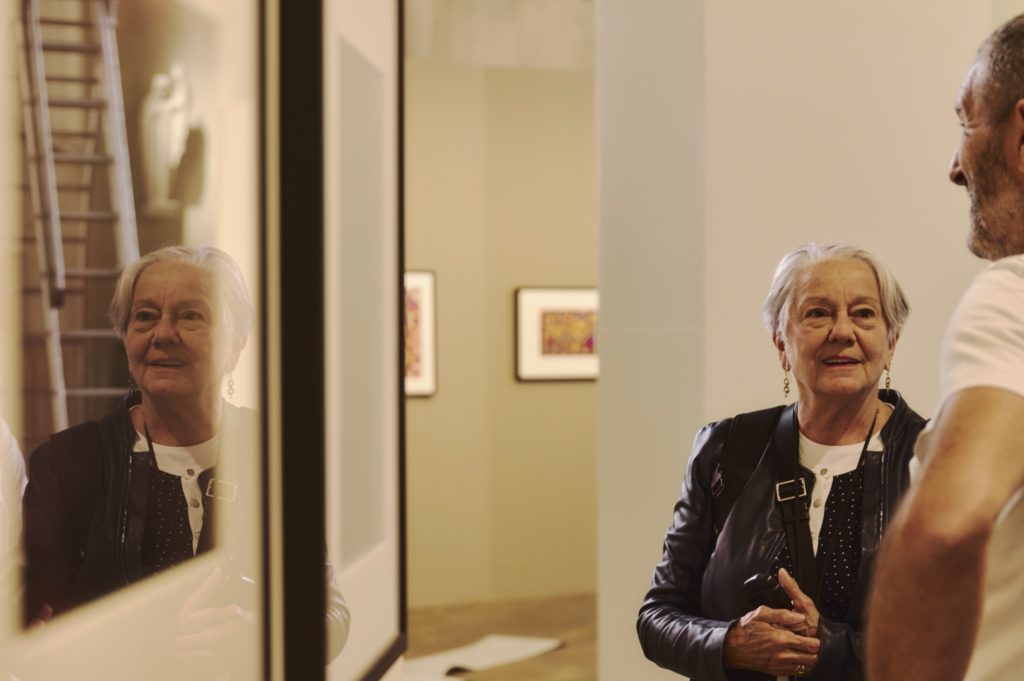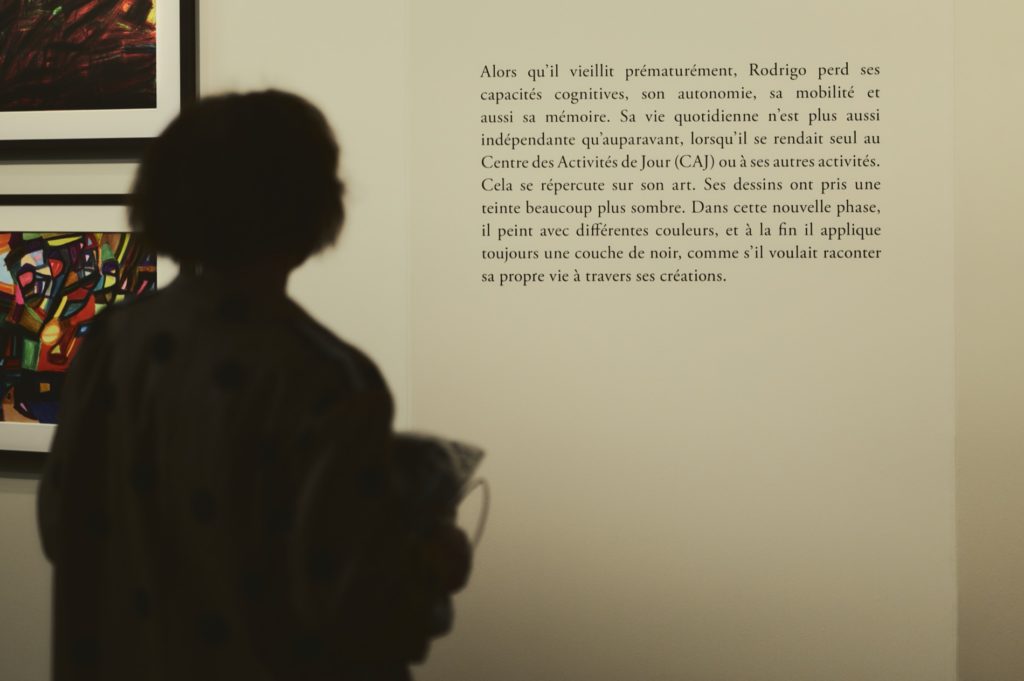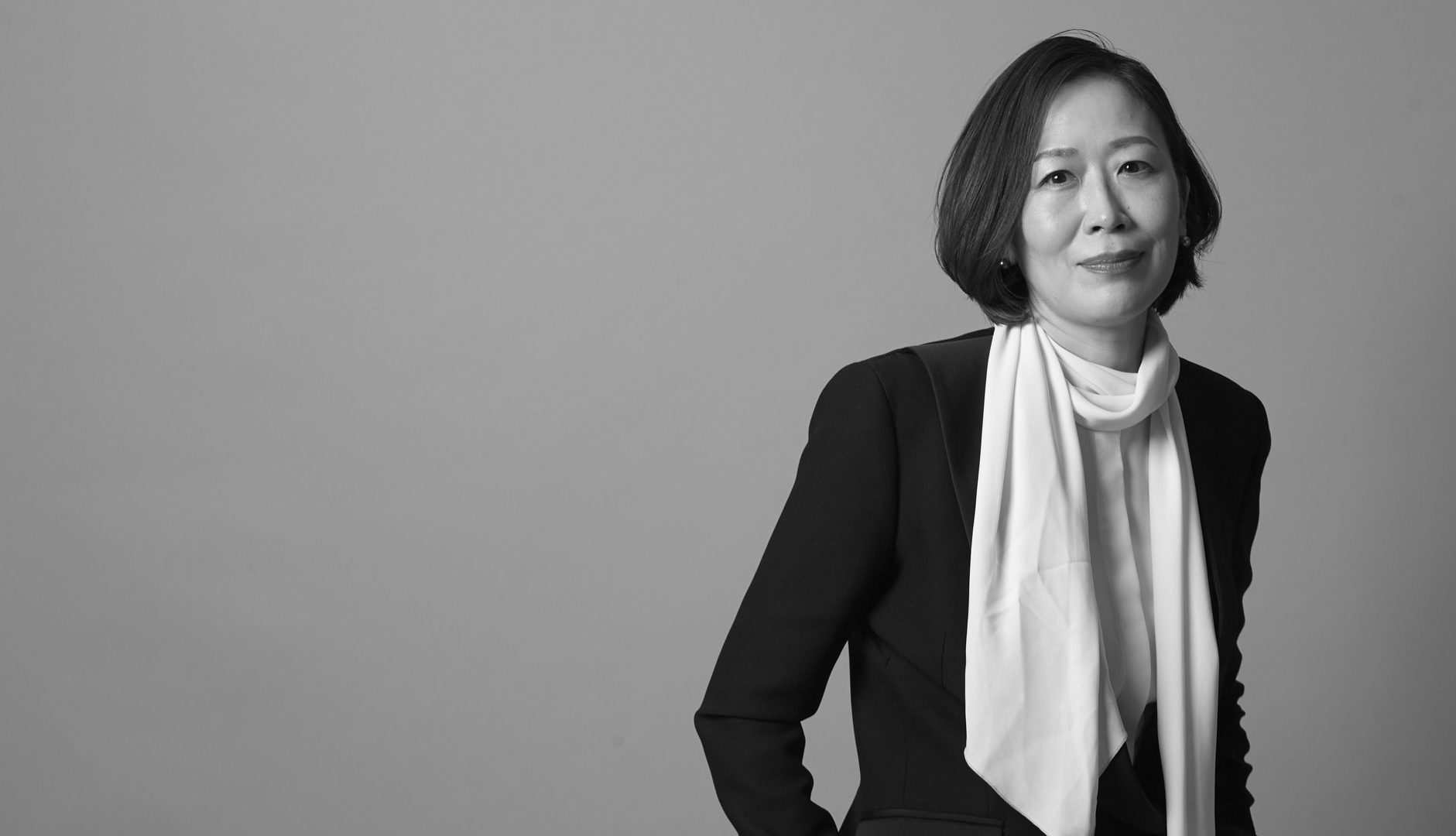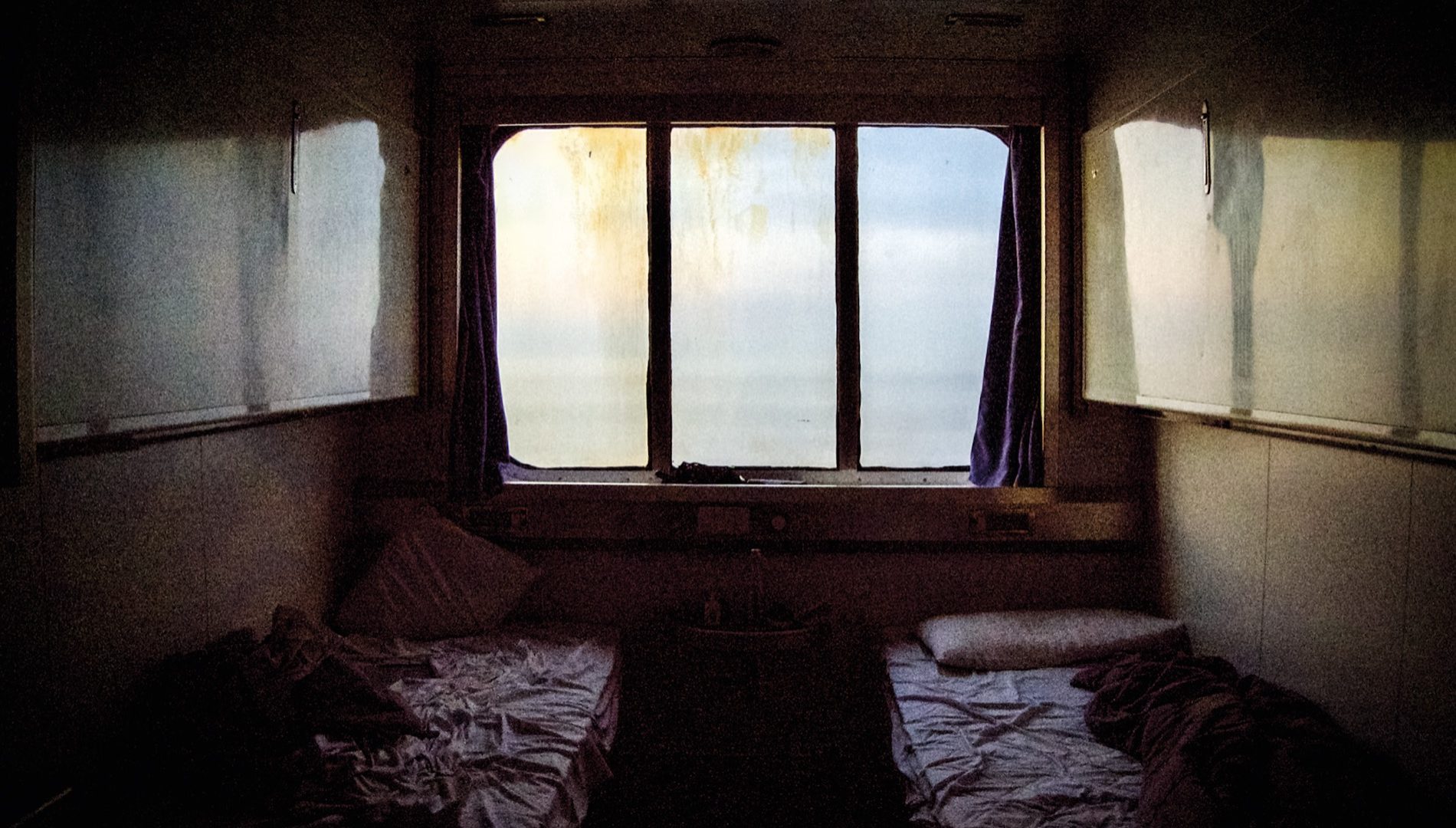Art has always been nourished by divergence. Rodrigo Salgado, an artist with Down syndrome, brings his own otherness to an exceptional exhibition being held in Reims until 10 September 2025, at the Atelier Simon-Marq, as part of the Brazil-France 2025 event program. The event is an invitation to explore Rodrigo’s renowned talent and colourful inner world.
This spring, the former church of the Sacré-Cœur de Reims will witness a number of firsts: the first time its 16 towering windows will be adorned with stained glass, the first time its nave will host an exhibition, and the first time that Rodrigo Salgado will present his creations to the public. This happy series of events trace back to a story of art, brotherly love and sincere friendship that began in 2016.
At the time, Taittinger was preparing to release its Brut Millésimé 2008, and as usual, the House had approached an artist to bring their personal touch to the label. On this occasion, the artist selected was famed Brazilian photographer Sebastião Salgado, who suggested a black-and-white photo of a leopard drinking from a watering hole – a scene he had captured in the Barab River valley in Namibia. The leopard became the emblem of this addition to the Taittinger Collection, and the visual made a great impact. It also brought the Salgado and Taittinger families closer together, and a close bond has since been formed. Now, the families have come together to create an unprecedented project whose central character is Rodrigo, Lélia and Sebastião’s youngest son.
An extra stroke of talent
Rodrigo was born 45 years ago, with an extra chromosome and talent to spare. From a very young age, and for hours on end, the boy sketched, coloured and painted every single day. He worked in his bedroom, or in the workshop next door to his friend and fellow painter, Michel Granger. Here, a comforting ritual was established: the same workbench, the same biscuits to nibble on, and the same sheets of white Arches paper. Never did the professional attempt to become a teacher to the happy child who was full of affection, preferring to let Rodrigo express himself with free spontaneity.
“I watched him thinking and concentrating, before picking up a marker to trace the outline he would then colour in. Nothing was ever done on a whim.” Like any mother, Lélia kept these scattered drawings as family mementoes. “At some point, we thought they were so good that we started showing them to our friends. To my great surprise, they were ready to buy them!” Selling the pictures didn’t feel like the right fit…but why not share them with the public?
Raw purity
Today, the Simon-Marq stained glass atelier resides in the deconsecrated church of Sacré-Cœur, Reims, which will serve as the project’s showcase and instrument. Not only will the atelier be hosting the exhibition, with its concrete nave providing the perfect display space, but it will also use 24 of Rodrigo’s drawings as the inspiration for 16 stained glass windows, to be displayed at the site. Pierre-Emmanuel Taittinger, President of the centuries-old glassmaking company, offered a helping hand. Sarah Walbaum, the Atelier’s director, oversaw the technical organisation: “We established a link with the artist in order to understand his work, and to transpose it rather than simply copying it to another medium. It’s a different type of project, and it’s been a joy to work on. The whole team was filled with emotion. There’s a raw simplicity and purity in his drawings and colours.” Naturally enough, Champagne Taittinger also leant its support to the project. “The love of art is an important part of our Maison, and so too is the human condition,” explains President Vitalie Taittinger. “In this child’s fragility there is also a powerful sense of life, of determination, of self-evident truth to be seen in his images. He shows how he sees the world and us, and gives us a window into his own world.”
Four periods
Rodrigo unveils his inner world not in words but in colours, whose intensity varies with age. Lélia sought to properly observe this artistic development, and as such, the 80 artworks featured in the exhibition are organised into periods. “There’s the first period, when Rodrigo drew quantities of small squares, and the period with Michel Granger, where he drew them in bigger spaces with many colours. Then the period when he cried a great deal because he was starting to lose his abilities and his freedom to do certain things; he still uses colours, but covers them with a layer of black. In the most recent period he uses more colour, because he has started to get used to this new, less independent life.”
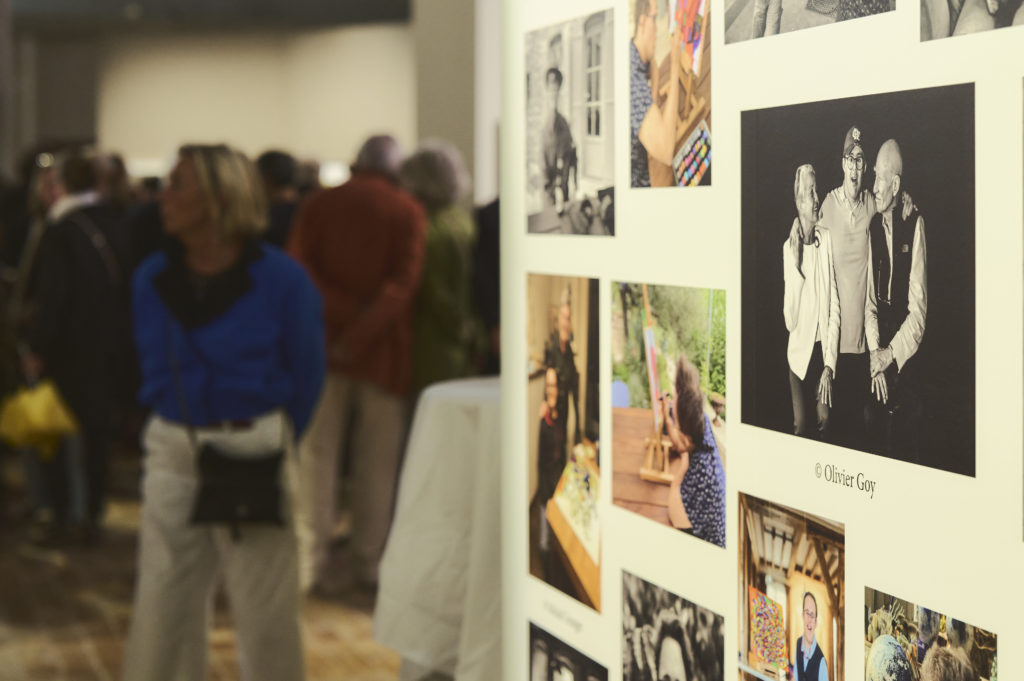
On 24 May 2025, the day of the exhibition’s opening, the Salgado family and many of their friends found themselves having to reconcile opposing emotions: the pride of unveiling the work of a child unlike any other, and the pain of having just lost Sebastião, who had passed away the day before. Despite their heavy hearts, they were all there to celebrate Rodrigo, the newly-minted artist. Michel Anger’s view is unequivocal: “I was struck by the consistency in his work. Behind every single creation there is a highly precise intention. There is no doubt this is the work of a true painter.”

